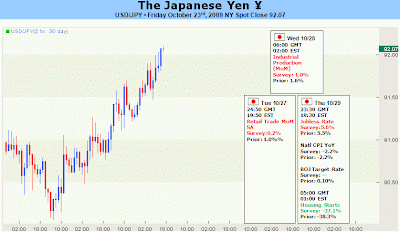The Japanese Yen fell against major forex counterparts for the third week in a row, slipping further on outperformance across key risky asset classes. Yet the 20-day correlation between the US Dollar/Japanese Yen pair and S&P 500 actually turned negative for only the second time in two years—emphasizing ongoing shifts in FX market dynamics. The Yen has long been the go-to currency during times of market stress and, by extension, the first to fall through financial market booms. As the lowest-yielding currency in the industrialized world, investors aggressively borrowed JPY to fund investments in sources of higher income. More recently however, the US Dollar has taken the dubious honor of the cheapest currency to borrow across global financial markets. The surprising shift goes a long way in explaining the USDJPY pair’s inverse correlation to key risky assets, and it will likely remain a major factor for the Japanese Yen through the foreseeable future. Week in and week out, we have repeated that financial market risk sentiment and the trajectory of the S&P 500 would be the major determinant of USDJPY price action. Of course, the substantive shift in risk correlations would suggest USDJPY moves may depend on other fundamental factors. Against other counterparts, the Yen’s continued losses show little investor interest in buying and holding the low-yielding currency. Given its extraordinarily low yield, holding Japanese Yen is an expensive proposition; the trader must pay higher interest rates to receive paltry JPY yields.
A cursory look at a Yen chart will show you that the currency will tend to lose more often than it gains—except to note that its rallies are far sharper than its declines. That is to say, FX traders avoid buying Yen unless they absolutely have to. And when they are forced to cover JPY short positions, they typically do so in a hurry. Given these JPY trading dynamics, we believe that the Japanese Yen is likely to continue drifting lower against the Euro, British Pound, Australian Dollar, and New Zealand Dollar. The wildcard remains whether we can expect a noteworthy correction in broader financial market risk sentiment.
Impressive performance and fresh highs across key barometers leaves markets at prime risk of pullback. Yet too many traders have gone bust in trying to time a market top. Until we see plausible signs of market turnaround, we have little reason to believe that the Japanese Yen may recover against higher-yielders. The admittedly unpredictable dynamics between the US Dollar and Japanese Yen make the USDJPY an especially challenging pair to trade. If nothing else, however, its recently bullish momentum is likely to keep it aloft through the coming week of trade
Tuesday, October 27, 2009
Japanese Yen on Pace for Further Losses Against Euro, US Dollar
Posted by Sooperbikes at 10:33 AM
Subscribe to:
Post Comments (Atom)
Blog Archive
-
▼
2009
(65)
-
▼
October
(13)
- Forex Trading Strategies and Systems used in Profe...
- talk about what might be the best forex training a...
- to learn a real forex tading method based on pure ...
- Become a confident forex trader using this forex s...
- Stop searching for the holy grail forex system, it...
- US Dollar Will Have to Weigh 3Q GDP for Fundamenta...
- Euro Top Remains Elusive, but ECB Rate Forecasts M...
- Japanese Yen on Pace for Further Losses Against Eu...
- British Pound Decline Could Continue on Falling BO...
- Swiss Franc Looks To Test Parity, Will SNB Intervene?
- Canadian Dollar May Come Under Pressure Ahead of B...
- Australian Dollar Outlook Remains Bullish on Inter...
- New Zealand Dollar Rally May Stall as RBNZ Disappo...
-
▼
October
(13)

0 comments:
Post a Comment